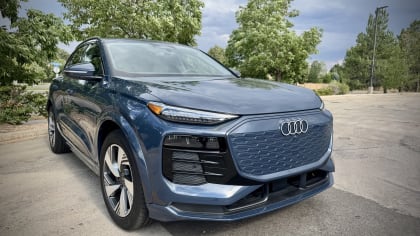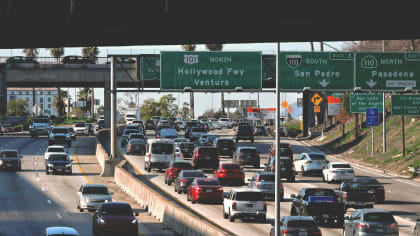CONTACT
This article is from our archives and has not been updated and integrated with our "new" site yet... Even so, it's still awesome - so keep reading!
Published on Sun, Nov 5, 2006
By: The LACar Editorial Staff

CONTACT
By JOHN GRAFMAN
Let me explain 'nothing' for a moment. Nothing dramatic happens. The car stays glued, and I don't hear any desperate telltale noise informing me that total meltdown is about to occur. Nothing more than just the usual cues.
On this Mercedes project car, the prior set of tires is now dust. After a year-plus and thousands of miles of torture and brutal punishment they just didn't have the tread left for safe driving. As winter sets in and the onset of a rainy season, all drivers need to reassess the competency of their tires. Before the former set of tires gave their last breath, I noticed a few characteristics that were able to provide a baseline for our new tires. Mind you, we are not making a direct comparison between two sets of new tires. We will save that for some future date.

The ability to slide on command might be the stuff of great drifting comps, but for everyday uses, it's good road adhesion that matters most. The old tried and true tires did have a very predictable breaking point. Furthermore, they had a very stiff ride, which gave no breaks over irregular roadways. They also had a very sharp angle where the sidewall met the tread. This feels like it might be contributing to an increase in steering resistance. While I don't think this is what the original Mercedes engineers had in mind when they developed both the steering and suspension systems, it nevertheless created a much more aggressive tone to the car.
I grew up on front-wheel drivers, some without power assist, or only a slight boost. I rather favor a car with heavier steering input required. I appreciate one that doesn't flinch unless a deliberate action is taken on the part of a driver, as opposed to a momentary muscle twitch from a hick-up or sneeze waving the car into another lane, or worse. The new set of rubber does require less force on the driver's part, but it still retains a sporty feel. The new tires also are not so jumpy as to translate every minor irrelevant motion of my hands into a course correction on the tires behalf.
Tires are always a mystery. So few products exist like them. Unlike most other consumer items, once used, tires can't be returned simply because they might not be exactly what the buyer wanted. Whatever the case, if they are too hard, soft, quiet, noisy, lacking in grip, or aquaplaning too much, all are traits of the tire that the consumer just has to deal with.

Making the first decision count is important and has far reaching implication when you, and your friends, and family trust their lives to those four doughnuts. So what's a consumer to do?
For years, Continental has been the choice of OEMs and aftermarket consumers. The original ContiSportContacts, and the following ContiSportContact 2 have been responsible for 31.7 million tires sold since 1995 (19.1 million OE, 12.6 replacement). The predecessors to the ContiSportContact 3 have built a well-deserved reputation on many sport sedans and coupes coming from Europe. In fact, Continental tires comprise 26 percent of the European original equipment market, and a huge 28 percent of the winter tire market, and a sizeable 22 percent of the overall market. The ContiSportContact 3 has some big shoes to fill.
Like so many good products, the new version of the series is not starting from scratch. Instead, the engineers created the next evolutionary step in the development cycle. They took all the best features and improved upon them wherever they could. By looking at the prior generation it is possible to see the family lineage clearly evident. It is just as easy to see how the new tires differ in tread design.

Audi has already chosen to apply the ContiSportContact 3 on the TT, A6, and the conquering 420 horsepower RS4. If the products are good enough for Audi, I think this will probably work favorably for most others of the same genre.
Continental is very aware that the performance tire market is getting tougher all the time. In consideration of this, Continental has improved the abilities of their latest creation in every area possible including safety, braking in wet and dry conditions, aquaplaning resistance, handling in the wet, interior noise, rolling resistance, weight, mileage, and handling. To top it off, Continental managed to do all of this at the same price as the outgoing model as well.
One additional feature that literally stands out is the rim protector. Other tires have them, but some just aren't prominent enough to do the job effectively. Hence the last set allowed the prominent Ronal powedercoated rims to get a tad grazed near the rim. While we aren't intentionally going to test the effectiveness of the guard, over tine I envision the beefier protector would do the job it was designed for.

After mounting the new rubber on our Mercedes Sports Coupe replete with those stylish 18-inch Ronal RT wheels I am a bit concerned. After such aggressive tires that we had used before, these seem quiet, almost too quiet. Usually I associate quiet with unresponsive and soft handling, neither of which excites me. None of the drumming sounds on the freeway, or thumping and crashing on potholes that literally made me grit my teeth before, are a trait of these tires. Nothing but smooth sailing, even with the same low-profile 40-series sizing.
The new tires already come in 26 different sizes, so the odds are good whatever you drive Continental has the right tire. The width ranges from a nominal 205 up to a hefty 325. Wheel size ranges from 17 up to 21 inches. Safety rating are W, Y, and Z. Profile also varies from fifty to a low twenty-five.
I didn't think two tires of equal dimension could behave so differently. The compliant ride is easy to distinguish. While I do lean towards a harder ride, I'm not against a more forgiving ride if it doesn't hamper the sporting abilities.

This is where the rubber meets the road. Exploring just what the new tires will do, I begin entering the cloverleaf turn earlier mentioned, I stay wide and anticipate closing in on an imaginary apex, and the Mercedes agreeably settles into this theoretical groove. All the while the ContiSportContact 3s are silent like little lambs. As the speed increases slightly with each run I am getting concerned. The Continentals are not showing the least inclination to sliding. At speeds that are now beyond what the other prior tires could handle I have to ask: Just where is the limit, and what happens when we get there? I did have a little safety net with the other tires. As the rear began to give way, the C230 electronic stability program would cut power and the fun, which would keep the car out of the weeds along the shoulder. Now the situation has changed dramatically. As the speeds have increased, any momentary lack of grip on the tires part might force the car of its track faster than a police officer can say "busted." As I don't want to bend a rim or my insurance rates on foolishness, I decide to settle on a new personal record without attempting a course record. After all, if I did want to get around the bend faster a real sports car would be the appropriate equipment. Including ContiSportContact 3 on it, or any other car, would simply be an obvious choice.
But in lieu of purchasing a brand new car, the Continental ContiSportContact 3 is the next best thing. Producing a more compliant ride and better road holding in one tire is the stuff of legends. Or in the case of Continental and the ContiSportContact series, it can be considered as simple as 1, 2, 3.

More can be found at www.conti-online.com
More on Ronal wheels at www.ronalusa.com
LA Car's article on tuning the C230 http://www.lacar.com/modules.php?name=News&file=article&sid=350




